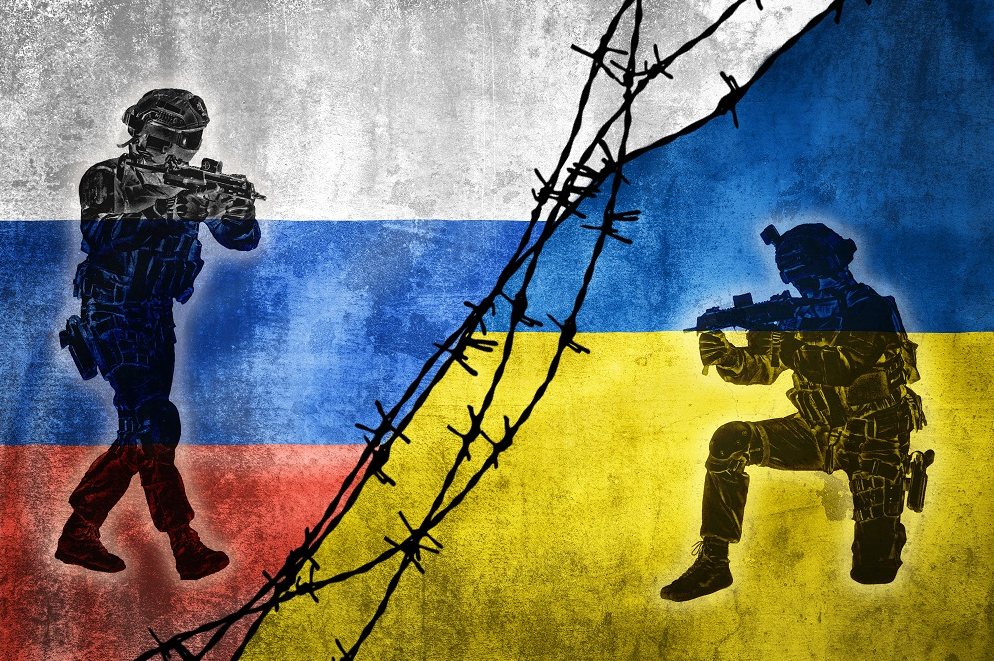
The war in Ukraine has lasted 22 months. Since the start of the war, both parties have been fully aware of their respective advantages and disadvantages and continually adjusted their war strategies to suppress the other. Since mid-2023, however, neither side has achieved decisive success on the battlefield nor pressed the other into acting the way it wishes. As a result, the war has gradually sunk into a costly impasse. It will be critical in 2024 for both of them to break the deadlock.
The direct cause of the impasse is a mismatch between opportunity cost and benefit. Support from the United States for Ukraine directly affects trends on the battlefield. The U.S. has provided Ukraine with about $113.4 billion in aid so far. Yet when the deadlock emerged, support the war for Ukraine’s independence and freedom became a bargaining tool for American political elites. More than a few Republicans oppose sinking more taxpayer money into the war in Ukraine and insist that the Biden administration should meet their demands on U.S. border security.
Of course the U.S. has its own pressures. With the outbreak of the Palestine-Israel conflict, Congress approved $14.5 billion in military aid to Israel. Obviously the two wars have made the U.S. government’s attempt to cut its $1.7 trillion fiscal deficit even more difficult.
The deadlock also arises from divergences within the European Union. The wars have proven costly for the EU, and it has paid dearly. The EU and its member states have provided around 84 billion euros in aid to Ukraine, and had wanted to offer another 50 billion euros over four years starting 2024. However, the aid plan was suspended during the EU summit in December because of Hungarian opposition.
New U.S. strategy
In view of the Ukraine battlefield stalemate, the U.S. is adjusting its strategy. Called “hold and build,” the new idea is to preserve Ukraine’s territorial integrity while tapping and perfecting its war capacity — and especially to restore its military production. What it should be, however, is a combination that includes isolating Russia politically and economically, attacking Russia’s economic resilience, reducing its war capacity and reorganizing the international political and economic order via “friend-shoring.”
Keynesian war response
“Military Keynesian economics” is Russia’s answer for the war against Ukraine, including establishing a new military commission to coordinate government relations, expanding central government powers, approving a labor law in favor of military-industrial capital and introducing operational models that meet the needs of the war in such fields as transportation, communications and energy.
Such measures have had some effect in the past. According to information from the Russian central bank in December, Russian GDP growth may surpass 3 percent in 2023, with military industries and related companies contributing the most. Meanwhile, Russia’s fiscal deficits remain high, about a 3 trillion ruble budgeted deficit for 2023. To maintain its war capacity and social stability, Russia has put roughly 37 percent of its financial budget into national defense and social policies. The country’s budgeted fiscal deficit is expected to be 1.6 trillion rubles in 2024.
This shows that a sort of military Keynesian economics has partially resolved Western economic sanctions on Russia and dragged the U.S. and its allies into a deadlocked war. However, it’s a double-edged sword. Former Soviet leader Leonid Brezhnev once adopted a similar model during his country’s rivalry with the U.S. In the beginning, the Soviet Union gained considerable advantages, but these soon became disadvantages, especially economically.
Japan surpassed the Soviet Union in 1978 to become the world’s second-largest economy, and the German Federation surpassed Russia to become the third-largest in 1986. In any fiercely competitive international system, a major country’s strategic miscalculation may place unbearable burdens upon itself.
Tenacious deadlock
Impasse is a common phenomenon in war, and it may occur repeatedly. Normally, the solution hinges on either of two incidents: a major military triumph, or warring parties conceding on critical issues. As to the deadlock in Ukraine, many believe Russia’s space and resources are more conducive to a war of exhaustion that Ukraine, the U.S. and their allies cannot match.
The judgment is obviously one-sided. First, the Soviet Union, which had a resource advantage, failed to escape the impasse in its Afghan war. Second, like the Russia-Germany war, the war in Ukraine is Ukraine’s war of self-defense. Third, controlling the cost-benefit equation was the policy starting-point of U.S. support for Ukraine — that is, the U.S. neither wants the war in Ukraine to escalate into one between NATO and Russia, nor to weaken its leadership on European security.
Therefore, from the perspective of the stakeholders’ capacity and willingness to make war, conditions for breaking the deadlock are not ripe. Next year, the war in Ukraine will be a test not only for the stakeholders’ strategic confidence and patience but also for their overall resilience.